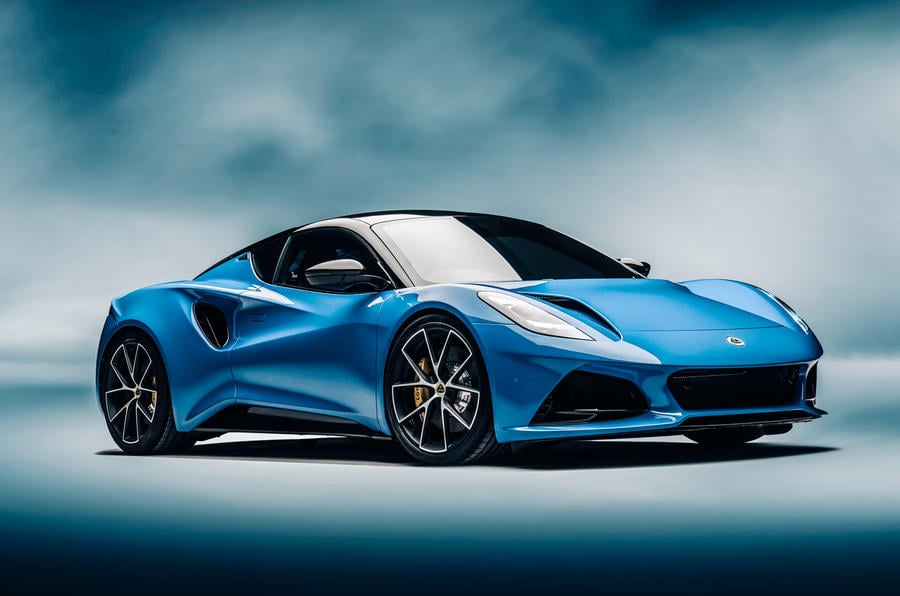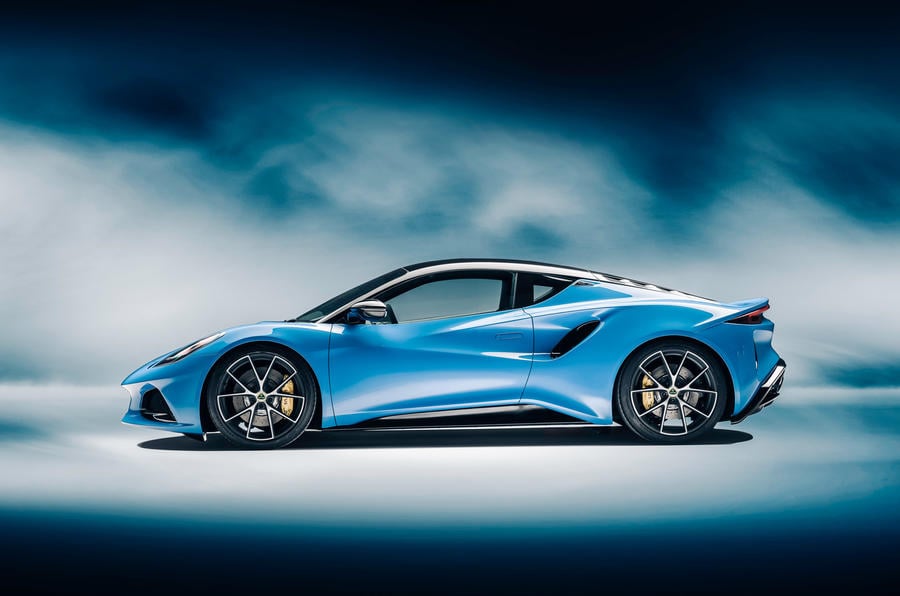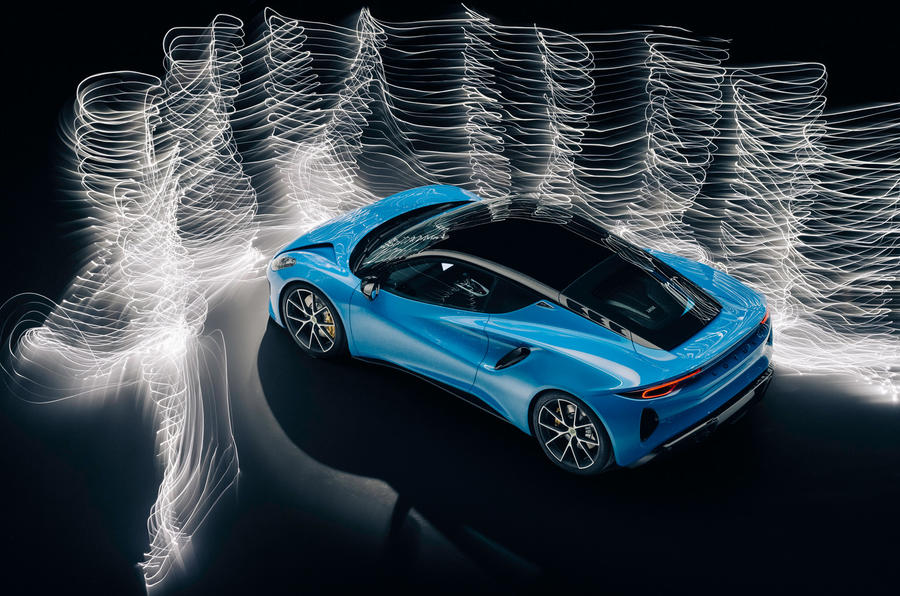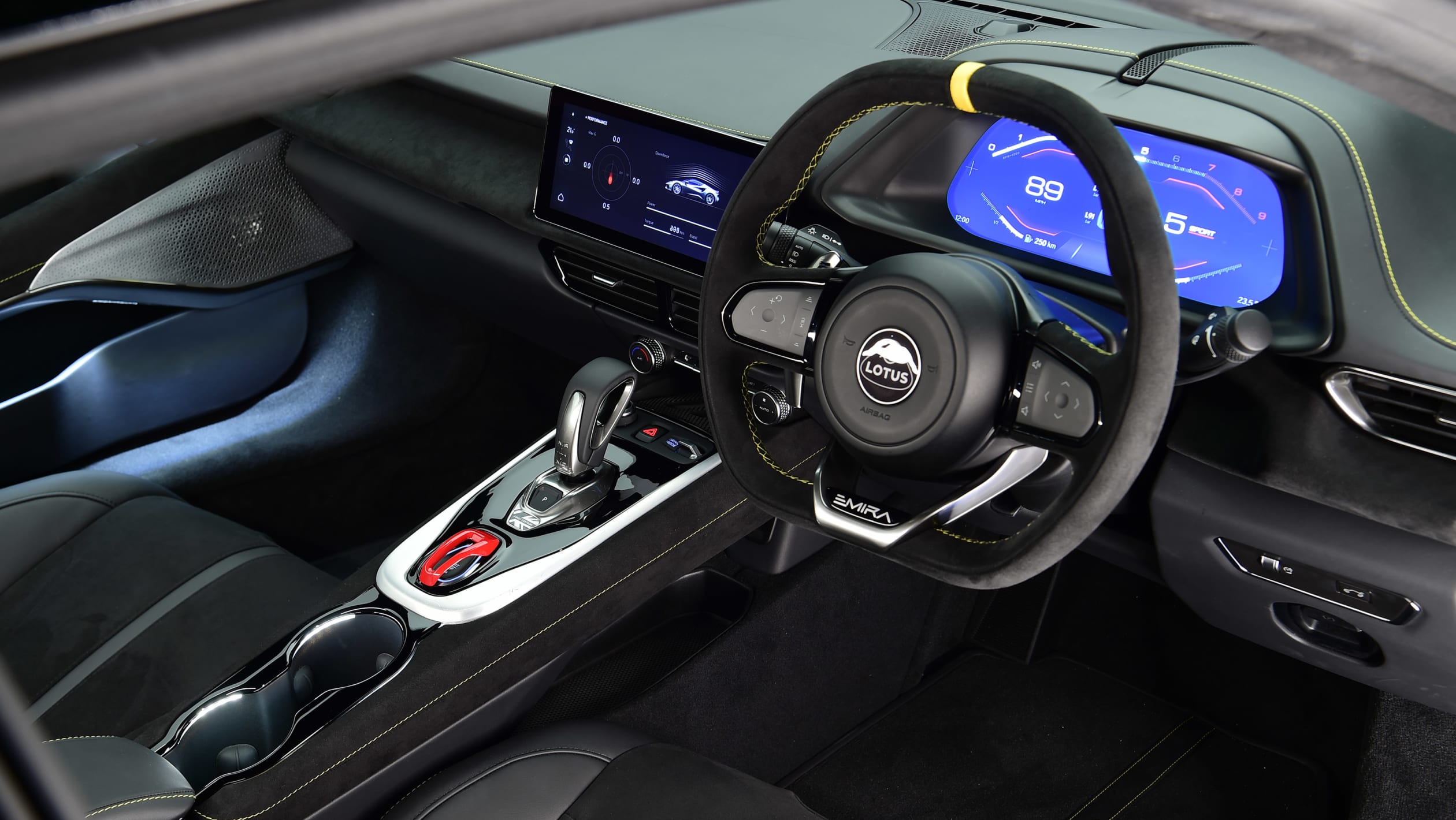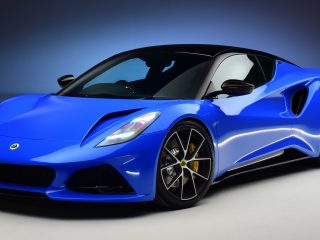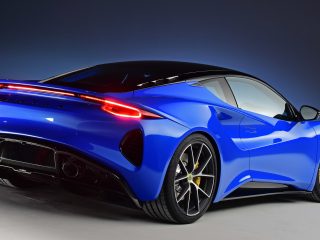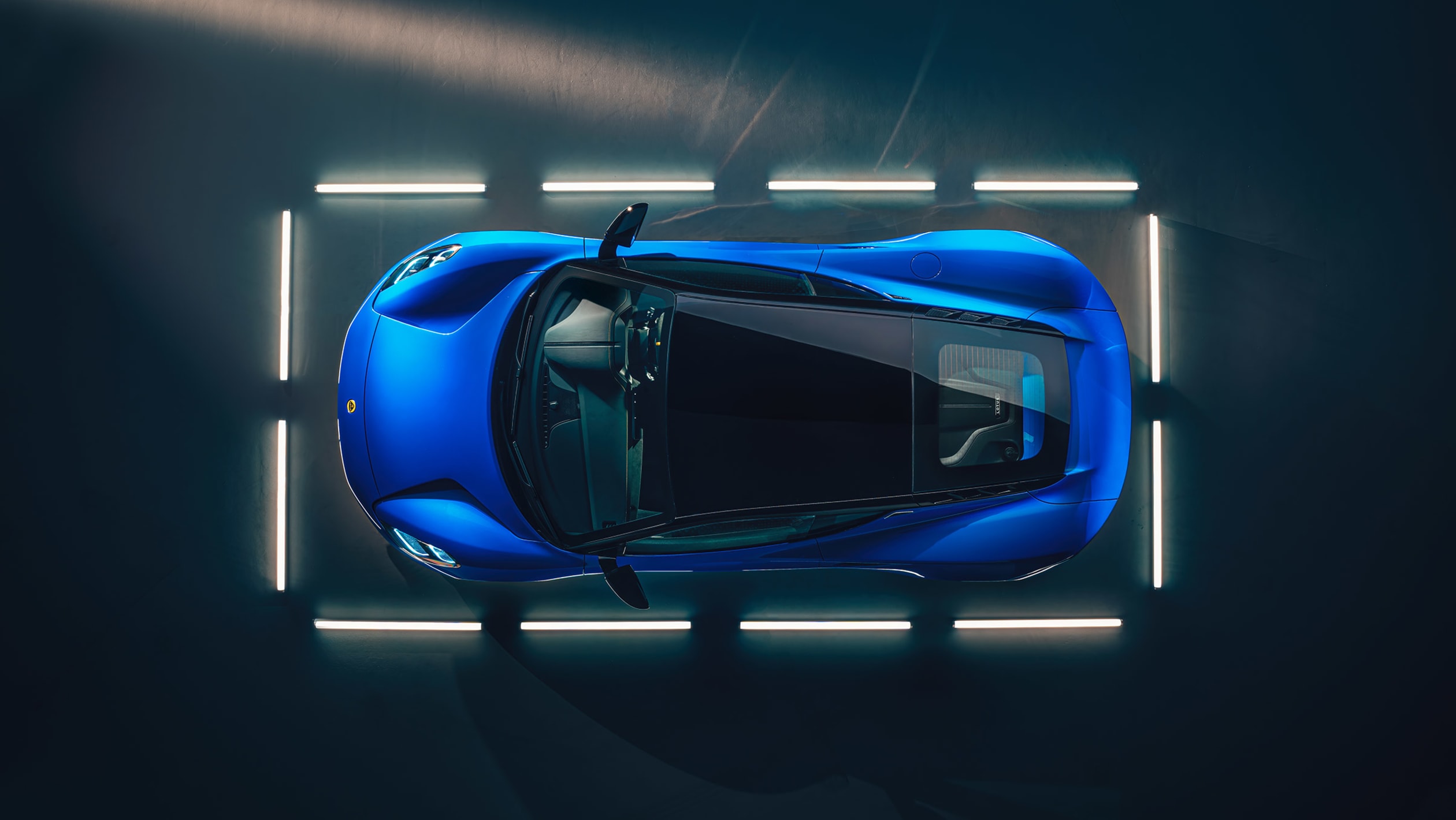Lotus’ Porsche 718 Cayman rival priced from $185k on launch in Australia, with a cheaper $150k model to come.
Lotus’s first brand-new series-production model in more than a decade is a stunning mid-engined, two-seat sports coupé with supercar-aping looks, a high-quality interior and the option of four-cylinder turbo power supplied by Mercedes-AMG. Australian deliveries will commence in July 2022.
The Emira (pronounced ‘eh-meer-ah’) will eventually be priced from $150,000 in Australia, although the first edition available – the Australian First Edition Emira V6 – will cost $184,990 before on-road costs. It will come standard with a six-speed manual transmission as standard and six-speed auto with paddle shift as an option.
Buyers will be able to soon configure their cars online at the www.lotuscars.com website. The Australian V6 First Edition cars will come standard with four option packs:
• Lower Black Pack – front bumper air blades, front splitter, side sills and rear diffuser finished in gloss black.
• Drivers Pack – gives the choice of Tour or Sport suspension with Goodyear Eagle F1 Supersport tyres, or Sport suspension with Michelin Pilot Sport Cup 2 tyres.
• Design Pack – adds privacy glass, sports pedals, a black Alcantara headliner, and the choice of black, red, yellow or silver painted brake callipers. Lotus–branded footwell mats are also included.
• Convenience Pack – adds front parking sensors, rear reversing camera, rain–sensing wipers with aero blades, auto–dimming mirrors and a rear luggage storage net.
You can read our Lotus Emira review by Jenson Button here.
Initially powered by the Toyota-sourced supercharged 3.5-litre V6 from the outgoing Exige and Evora, a 2.0-litre AMG unit will follow called i4. The entry-level Emira i4 which won’t be seen in Australia until later in 2023 is targeted to start from $150,000, subject to final specification and homologation.
Bespoke First Edition touches include a set of two-tone 20-inch alloy wheels, branded brake calipers, a tyre pressure monitoring system, black contrasting lower trim and 12-way adjustable heated seats. Buyers can choose from six exterior and seven interior colours, while the standard-fit Design Pack brings privacy glass, a black Alcantara headliner and sports pedals. The First Edition is also equipped with the Drivers Pack which offers the choice of ‘Tour’ or ‘Sport’ suspension, and can be specified with either Goodyear Eagle F1 Supersport or Michelin Pilot Sport Cup 2 tyres.
The Emira will be Hethel’s final non-electrified car. It follows the limited-run Evija electric hypercar in this promising new era for Lotus under the majority ownership of Geely, which is funding not only new cars but also new facilities and manufacturing processes with the aim of products being built to a higher and more consistent quality.
Underpinning the Emira is Lotus’s new Sports Car Architecture, which was developed using the extruded and bonded aluminium chassis technology first used by Lotus on the Elise of 1996. The car is 4412mm long, 1985mm wide and 1225mm high, with a wheelbase of 2575mm, making it just a fraction larger than the Evora.
While the architecture is nominally a development of that older car’s, only the wheelbase remains the same. The tracks have been widened, larger 20-inch wheels can be fitted and the Emira has dramatically different proportions to the Evora.
The first deliveries will be special, higher-spec Launch Edition cars using the Toyota V6, which will be offered with a manual or automatic gearbox. The AMG four-pot (which became available through a new technical partnership between Lotus and AMG, born of Geely’s stakeholding in AMG parent firm Daimler) has been given its own tune for Lotus, along with a bespoke air intake and exhaust. It will come exclusively with an eight-speed dual-clutch automatic gearbox.
Both versions of the Emira have their engines mounted transversely and powering the rear axle alone. Lotus hasn’t yet confirmed final performance figures for either version of the Emira, rather that there will be a range of outputs between 265kW and 295kW, alongside maximum torque of up to 430Nm.
The 0-100km/h time will be less than 4.5sec and the car will be able to reach a top speed of more than 290km/h. CO2 emissions, meanwhile, will officially be below 180g/km.
In terms of design, the Emira takes heavy influence from the new Evija, sitting low and wide with prominent intakes, short overhangs and bulky haunches among its defining characteristics.
Styled by Lotus design boss Russell Carr, the Emira has been made more usable and fitted with more technology than any Lotus before it.
That modernisation push extends most obviously to LED lighting at the front and rear and, on the inside, a 10.25-inch touchscreen for an infotainment system that includes Apple CarPlay and Android Auto as standard, along with a 12.3-inch digital driver’s information display.
The interior is completely unrelated to that of any previous Lotus. It is not only easier to get in and out of but also more spacious in its feel (ingress, egress and head room are claimed to match the class leader), trimmed in higher-quality materials and fitted with an array of clever tech and storage integrations.
These include twin central cupholders and extra storage in larger doorbins. There’s a 208-litre cargo hold behind the seats and 151 litres of space in a boot behind the engine.
A significant increase in convenience features brings a multifunction steering wheel, a 10-channel premium sound system from KEF, four-way electrically adjustable seats as standard (12-way-adjustable sports seats are optional), keyless ignition, cruise control, rain-sensing wipers, electrically folding wing mirrors, rear parking sensors, optional front parking sensors and an automatically dimming rear-view mirror.
Despite all the new tech and richer materials, some classic Lotus features, such as a semi-exposed gear linkage on manual cars, are retained. Adaptive cruise control, an anti-collision system, fatigue alert, road sign detection, a speed limiter, lane-departure warning, rear cross-traffic alert and lane-changing assistance all feature as part of the ADAS (advanced driver assistance systems) suite. This is made possible by a new electrical architecture taken from Geely but adapted to Lotus’s needs.
All these advancements in making a more usable everyday Lotus don’t come at the expense of the driving performance, Lotus insists.
As managing director Matt Windle put it, these features have been added to “make it appeal to another set of buyers while retaining the same core Lotus dynamics”.
The Emira uses double-wishbone suspension all-round and retains hydraulic (rather than electric) steering, which will delight Lotus purists.
Two chassis settings will be offered: the standard Tour, which allows a softer ride, and the stiffer Sport, which will be offered with an optional Lotus Driver’s Pack. This includes launch control and Michelin Pilot Sport Cup 2 tyres in place of the standard Goodyear Eagle F1 Supersport rubber.
The Emira doesn’t feature any active aerodynamics but instead produces balanced downforce between the front and rear that provides more grip in corners while retaining precise, predictable handling.
“The Emira has a wider track than any recent Lotus road car, enhancing stability, delivering exceptional roadholding and giving the sensation of a very low centre of gravity,” said Gavan Kershaw, Lotus’s director of vehicle attributes. “It’s a true Lotus sports car that builds on the legacy of the Elise, Exige and Evora.”
While the Emira is around 5kg heavier than the Evora, at 1405kg, it has still undergone a series of weight-saving measures to compensate for the significant increase in technology and features that have been introduced, which would otherwise have made the car notably heavier.
The vehicle architecture is constructed at a new factory in the UK’s Norwich called Lotus Advanced Structures in a more automated process, before being transported the 16km to the company’s base in Hethel. Here, the car is built in a semi-automated fashion in a new 12,000m2 factory that was previously known on site as the ‘skeleton building’. It had sat incomplete for a decade in the wake of the failed attempt to kick-start Lotus’s reinvention under Malaysian firm Proton.
The total investment in UK production facilities by Lotus now totals $189 million, and includes a new automated paint shop at Hethel. “I really want to take us to the next level of quality,” said Windle, adding that there will be a greater “consistency of build” between Emira examples, thanks to the modernised production processes, while still retaining an authentic hand finish to the cars.
Perceived quality will also be significantly improved over recent Lotus cars, Windle said, thanks to the rigid standardisation of key aspects, including paint finish.
Mark Tisshaw




